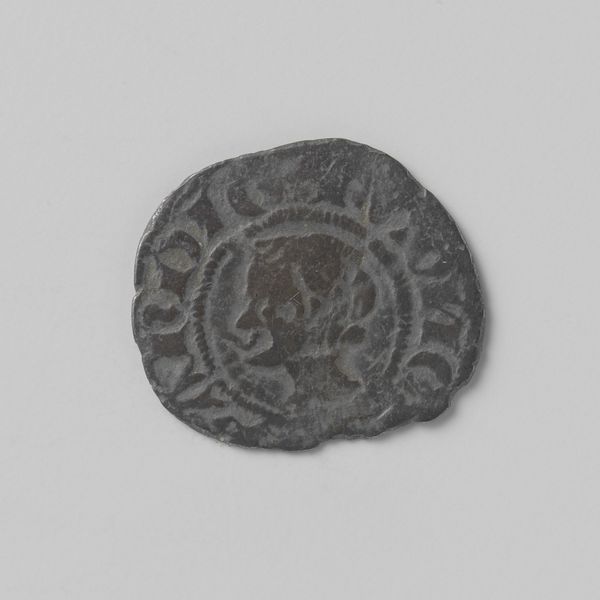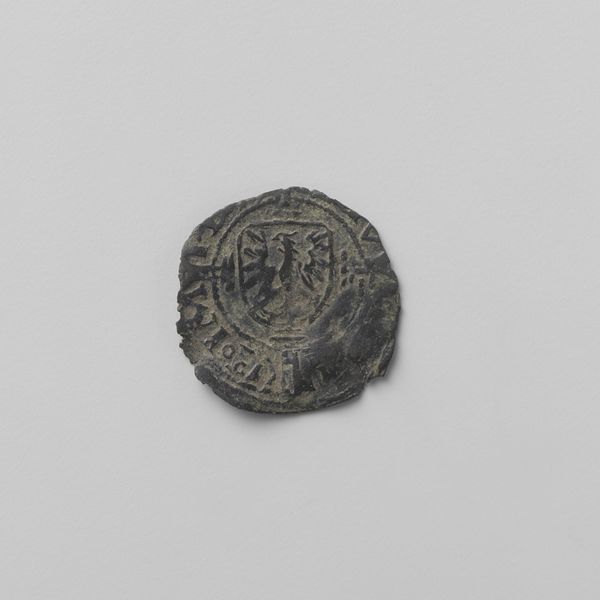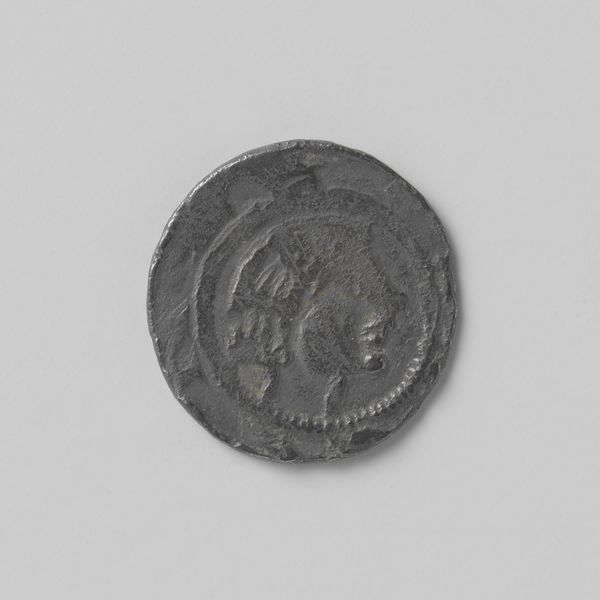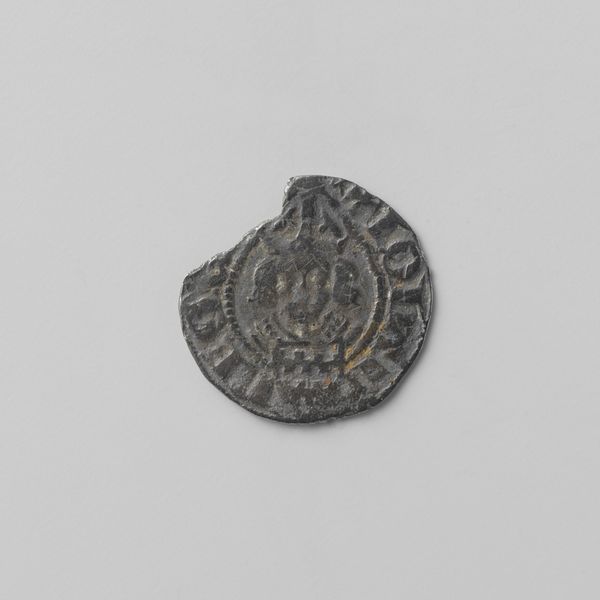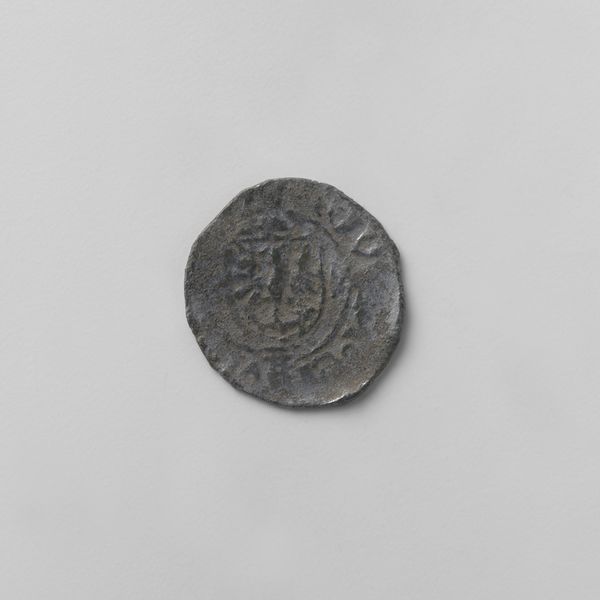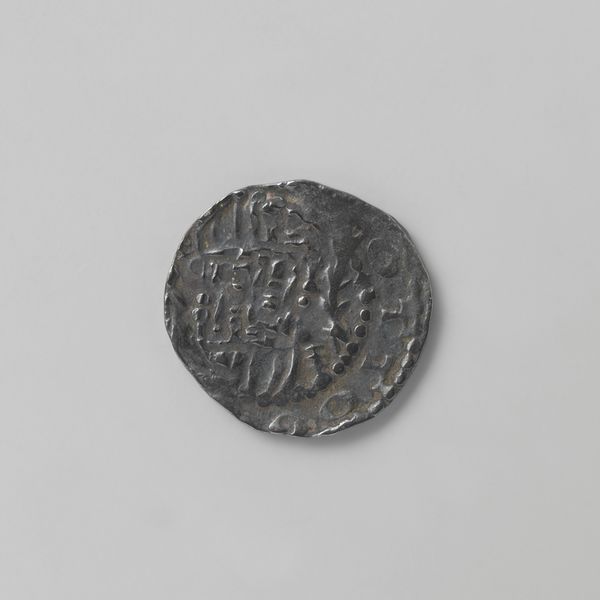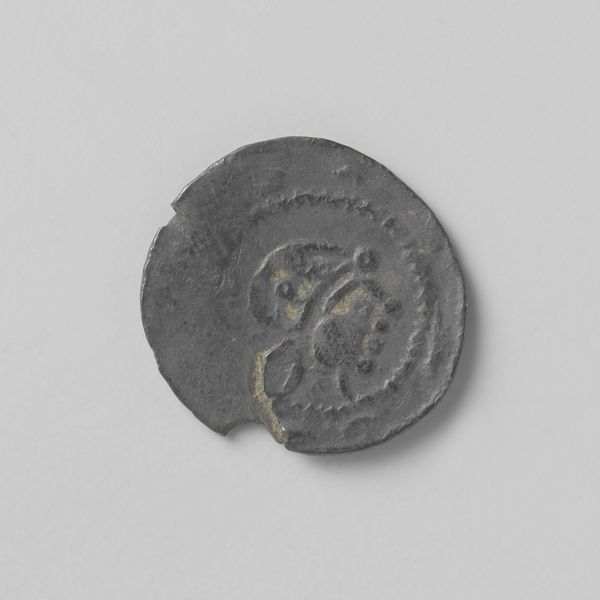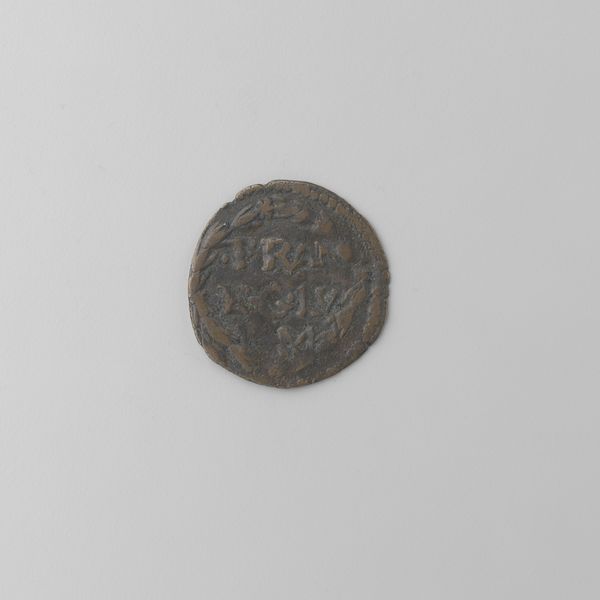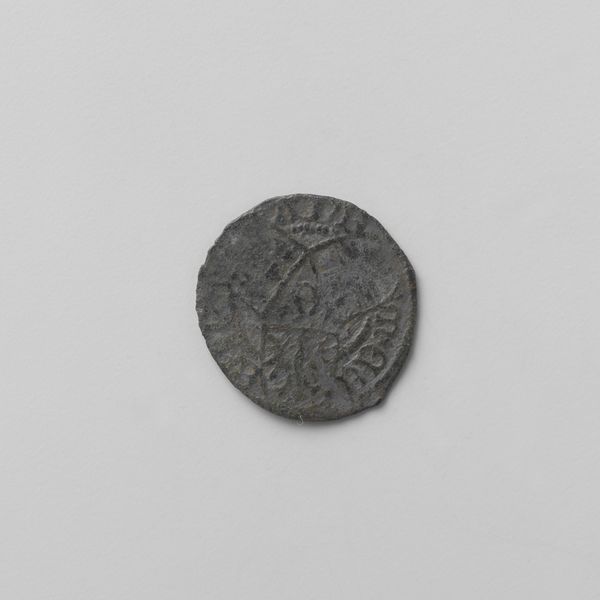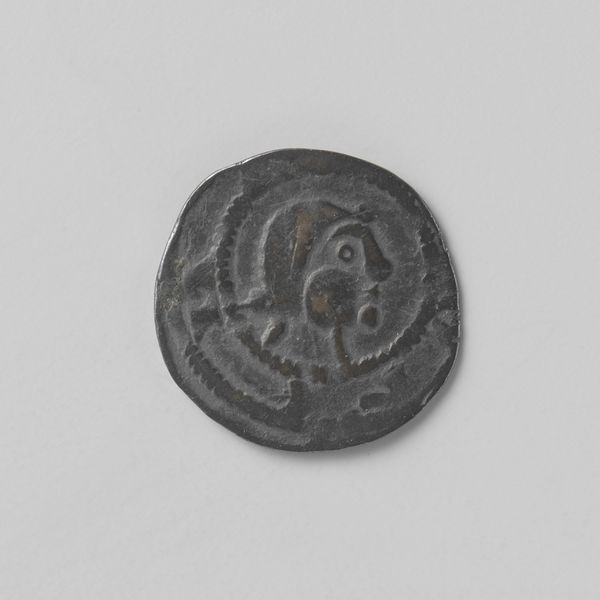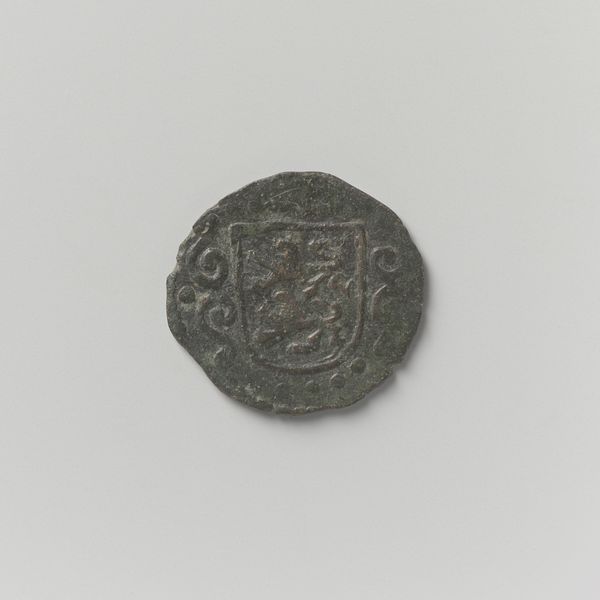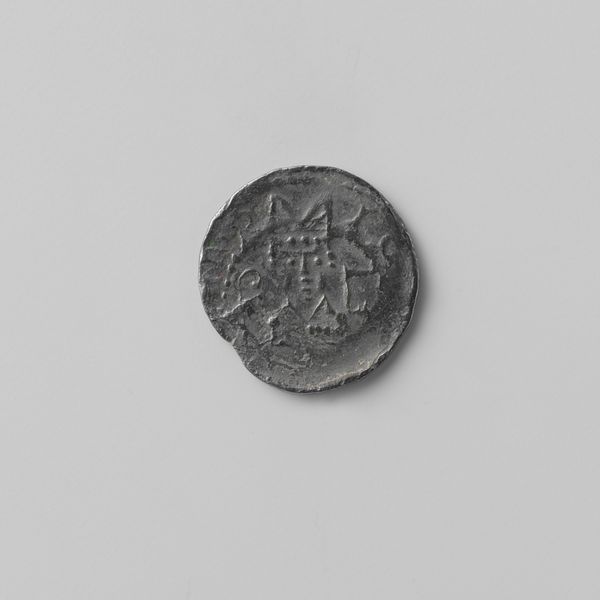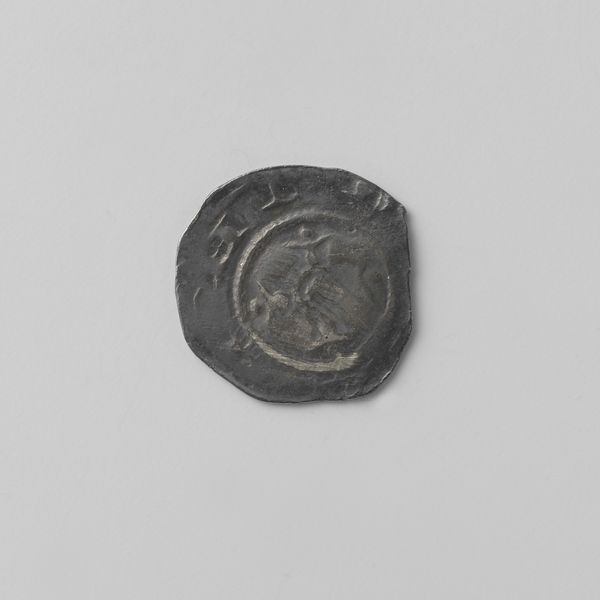
intaglio, relief, bronze
#
intaglio
#
relief
#
bronze
#
embossed
#
history-painting
#
coin
Dimensions: diameter 1.4 cm, weight 0.42 gr
Copyright: Rijks Museum: Open Domain
Curator: Let's delve into this Utrecht penny, dating from 1198 to 1212, issued during Dirk van Ahr’s rule. Editor: Well, right away, the materiality strikes me. It’s bronze, but the wear suggests intense circulation. It speaks of everyday usage, of countless transactions. Curator: Absolutely. The value of such coinage in that era reflects both the ruler’s power and the developing trade networks. These coins helped enable larger markets and shifting social structures. Editor: You can really see the craft, too. Look at the embossed detail, the deliberate relief, even on such a small scale. It makes me consider the laborer who produced these coins – their skill, and the importance placed on the aesthetic quality of money itself. Curator: Exactly. Monetary imagery conveyed a deliberate message about authority. Consider how it’s part of a larger symbolic language – images, titles – that rulers deployed to bolster their position. Editor: What intrigues me most is thinking about what bronze was worth then versus now, and how control over bronze supplies equaled power, too. It's about understanding this object not just as art, but as an embodiment of material wealth and economic structures. Curator: Yes, how objects themselves facilitate and represent political economies. Coins are like little messengers reflecting grand narratives. Each penny contributes to this ongoing historical dialogue. Editor: It's humbling to think of it passing through hands over centuries. A tangible reminder that art is so often deeply intertwined with the material conditions of the time. Curator: Precisely. So much can be discovered when we study how art shapes, and is shaped by society. Editor: Thanks. Seeing it this way makes you feel more aware of it as more than a coin.
Comments
No comments
Be the first to comment and join the conversation on the ultimate creative platform.
